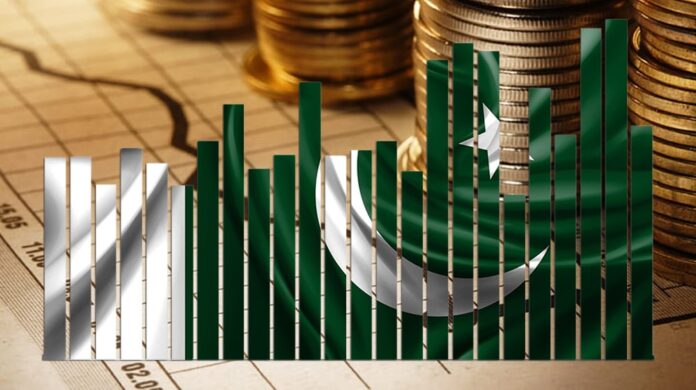ISLAMABAD: Pakistan’s economy has been facing tough circumstances over the last couple of years. The closing of FY24 marks a rebound in the economy and restores some form of stability to the country.
In a detailed briefing at the Annual Plan Coordination Committee (APCC) meeting, the economic performance of Pakistan for the fiscal year 2023-24 was reviewed, alongside the proposed plan for 2024-25.
As per details shared by the Ministry of Planning Development and Special Initiatives after the APCC meeting, despite facing considerable challenges at the outset, Pakistan’s economy showed signs of recovery by the end of the fiscal year, achieving a moderate growth rate of 2.4%.
Economic Performance in 2023-24
The agricultural sector emerged as the primary driver of this growth, recording an impressive 6.3% increase. This robust performance was attributed to bumper harvests of key crops such as wheat, cotton, and rice. In contrast, the industrial sector experienced a modest growth of only 1.2%, hampered by a slowdown in large-scale manufacturing activities. Nevertheless, segments like mining and quarrying, small-scale manufacturing, and construction saw positive contributions.
The services sector grew by 1.2%, driven by slight improvements in wholesale and retail trade, which expanded by just 0.3%. Similarly, transport, storage, and communications sectors reported a minimal growth of 1.2%, reflecting subdued demand.
On the fiscal front, total revenue collection surged by 41% from July to March 2023-24, surpassing the 36.6% increase in total expenditure. Tax revenues rose by 29.3%, while non-tax revenues soared by 89.8%. However, markup expenditure remained a significant burden, constituting 40% of total expenditure.
Inflation averaged at 26% during July-April 2023-24, a significant number yet a small improvement from the 28.2% recorded in the same period the previous year. A declining trend in inflation has been noted since January 2024, offering some respite to consumers.
The external sector faced numerous challenges initially but saw improvements due to the narrowing of the current account deficit, inflows from the International Monetary Fund (IMF) and other foreign donors, and measures taken by the government and the State Bank of Pakistan (SBP). These factors collectively helped stabilize foreign exchange reserves and the exchange rate.
Economic Outlook for 2024-25
As per the committee, the economic outlook for 2024-25 appears positive, with a growth target set at 3.6%. This optimism is contingent upon several factors, including political stability, a stable exchange rate, and continued macroeconomic stabilization under the IMF’s program. Additionally, anticipated decreases in global oil and commodity prices are expected to provide a boost.
The agricultural sector, benefiting from a high base effect, is projected to grow by 2%. The industrial sector is expected to recover, with a targeted growth of 4.4%, supported by a predicted 3.5% increase in large-scale manufacturing. Enhanced inputs and energy supplies, bolstered by lower global oil and commodity prices, are expected to drive this growth. The services sector is also forecasted to expand by 4.1%, supported by the expected growth in commodity-producing sectors.
Investment is anticipated to rise, with the total investment-to-GDP ratio expected to increase from 13.1% in 2023-24 to 14.2% in 2024-25. This improvement is attributed to the expected economic turnaround, a better business environment, and political stability. National savings are targeted at 13.3% of GDP.
Fiscal consolidation measures are expected to narrow the fiscal deficit, while domestic average inflation is projected to moderate to 12%, driven by falling global inflation. A detailed plan for said measures is expected to be announced in the upcoming budget.
Meanwhile, APCC also approved the Public Sector Development Program (PSDP) at Rs 1221 billion for the upcoming fiscal year 2024-25.
The APCC noted that Ministries/Divisions initially requested Rs. 2.8 trillion for projects. However, due to fiscal constraints, the essential funding requirements were discussed with the Ministry of Finance.
Consequently, the provisional size of the PSDP was set at Rs. 1221 billion. The formulation of the PSDP faced several challenges, including rising throw-forward, additional demands and provincial projects of devolved nature.
The forum was apprised about the challenges faced in formulation of PSDP for the fiscal year 2024-25. The major challenges included;
- Thin spreading of PSDP allocation and rising throw-forward:
- Rising throw-forward exacerbates challenges in prioritizing and completing ongoing projects.
- Significantly high demand for rupee cover against Foreign Exchange /Foreign Aid component.
- Additional demands for post-flood 2022 rehabilitation efforts and implementation of 5Es initiatives aimed at economic recovery and resilience.
APCC advised Ministries and Divisions to prioritize core national projects, foreign aid projects, fund projects with high expenditures for timely completion, and prioritize federal, clear pending liabilities. The PSDP formulation process was guided by NEC and SIFC recommendations/directions.
Following adjustments, the proposed PSDP for 2024-25 was slightly modified, with specific allocations detailed for various sectors.
The sectoral strategy of the proposed PSDP 2024-25 includes allocations for infrastructure development and promoting industrial linkages, energy sufficiency, augmenting water resources, improving transport and communications, emphasizing social sectors, science and IT, governance, production sectors, and ensuring balanced regional development.
























